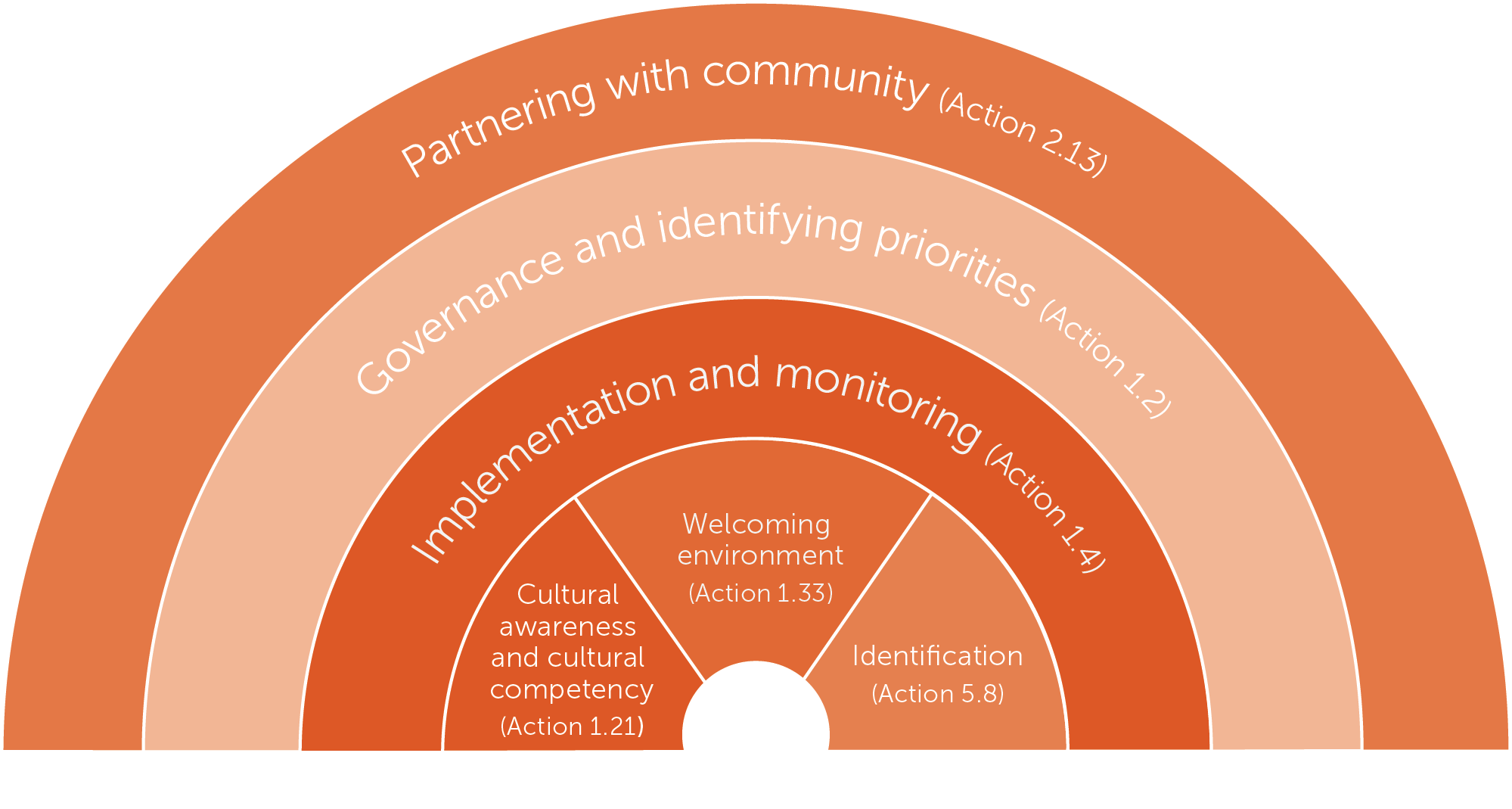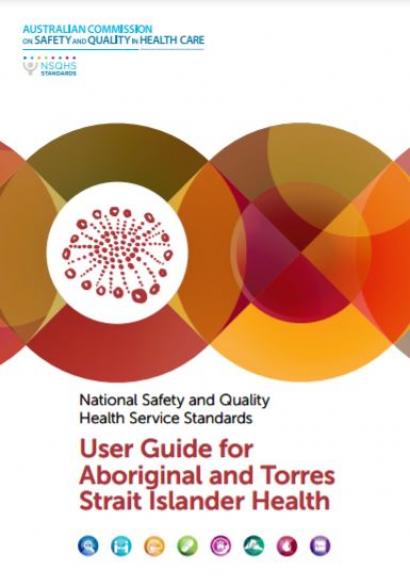User Guide for Aboriginal and Torres Strait Islander Health
The user guide has been developed to support health service organisations implement the six Aboriginal and Torres Strait Islander health related actions.
The NSQHS Standards require health service organisations to address six actions that are specific to Aboriginal and Torres Strait Islander people.
Aboriginal and Torres Strait Islander people have the right to feel confident and safe in accessing the Australian healthcare system, and the system must be able to respond to their needs. For this to occur, health service organisations should ensure that service provision is equitable, and that patient needs drive the level and range of care that can be accessed.
It is evident that there are health disparities between Aboriginal and Torres Strait Islander people and non-Indigenous Australians, and treatment inequities in the health system.
Combined with the level of comorbidities in Aboriginal and Torres Strait Islander people, their age at diagnosis and their socioeconomic position, these disparities require a refocusing of health care to meet the unique needs of each patient.
Like safety and quality more broadly, the safety and quality of care for Aboriginal and Torres Strait Islander people can only be improved when everyone who works in the health service organisation recognises that they are responsible for providing equitable care – it is not solely the responsibility of Aboriginal and Torres Strait Islander employees and services.1
The six actions in the National Safety and Quality Health Service Standards that focus specifically on meeting the needs of Aboriginal and Torres Strait Islander people are:
Partnering with Consumers Standard
- Action 2.13 - The health service organisation works in partnership with Aboriginal and Torres Strait Islander communities to meet their healthcare needs
Clinical Governance Standard
- Action 1.2 - The governing body ensures that the organisation’s safety and quality priorities address the specific health needs of Aboriginal and Torres Strait Islander people
- Action 1.4 - The health service organisation implements and monitors strategies to meet the organisation’s safety and quality priorities for Aboriginal and Torres Strait Islander people
- Action 1.21 - The health service organisation has strategies to improve the cultural awareness and cultural competency of the workforce to meet the needs of its Aboriginal and Torres Strait Islander patients
- Action 1.33 - The health service organisation demonstrates a welcoming environment that recognises the importance of cultural beliefs and practices of Aboriginal and Torres Strait Islander people
Comprehensive Care Standard
- Action 5.8 - The health service organisation has processes to routinely ask patients if they identify as being of Aboriginal and/or Torres Strait Islander origin, and to record this information in administrative and clinical information systems
Addressing the six specific actions to meet the needs of Aboriginal and Torres Strait Islander people
To provide safe and high-quality care to Aboriginal and Torres Strait Islander people, the health service organisation must have a knowledge of the community’s needs and priorities. This can only be achieved by working in respectful and meaningful partnership with the Aboriginal and Torres Strait Islander community (Action 2.13). Establishment and maintenance of such partnerships are vital to the effective implementation of the other five Aboriginal and Torres Strait Islander–specific actions (Figure 1). Through these partnerships, the Aboriginal and Torres Strait Islander community will help provide necessary input and guidance on priority health needs, and cultural beliefs and practices that have impacts on healthcare provision.
View the topic items below for specific strategies to support the implementation of these actions.

References
- National Aboriginal and Torres Strait Islander Health Standing Committee of the Australian Health Ministers’ Advisory Council. Cultural respect framework 2016–2026 for Aboriginal and Torres Strait Islander health. Canberra: AHMAC; 2016.
- Marmot M. Social determinants and the health of Indigenous Australians. Med J Aust 2011;194:51–13.
- Brown N. Pacific caucus intervention to the 12th session of the United Nations Permanent Forum on Indigenous Issues. New York: 20–31 May 2013.
- Aboriginal and Torres Strait Islander Social Justice Commissioner, Steering Committee for Indigenous Health Equality. Close the gap: national Indigenous health equality targets. Sydney: Human Rights and Equal Opportunity Commission; 2008.
- Franks C, Curr B. Keeping company: an inter-cultural conversation. Wollongong: Centre for Indigenous Development Education and Research, University of Wollongong; 1996.
- National Aboriginal Health Strategy Working Party. A national Aboriginal health strategy. Canberra: National Aboriginal Health Strategy Working Party; 1989.

